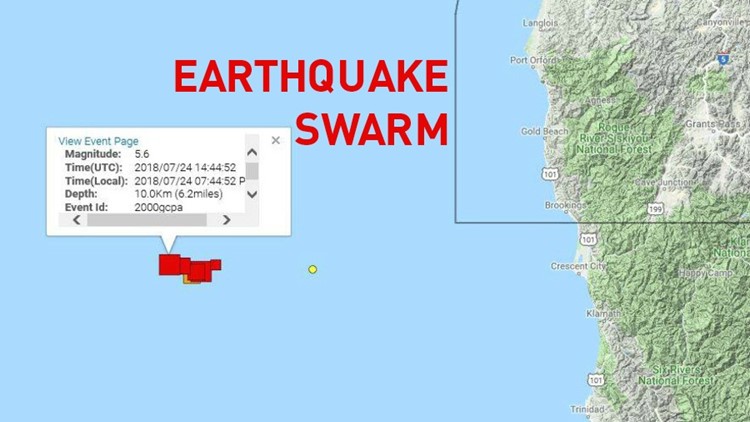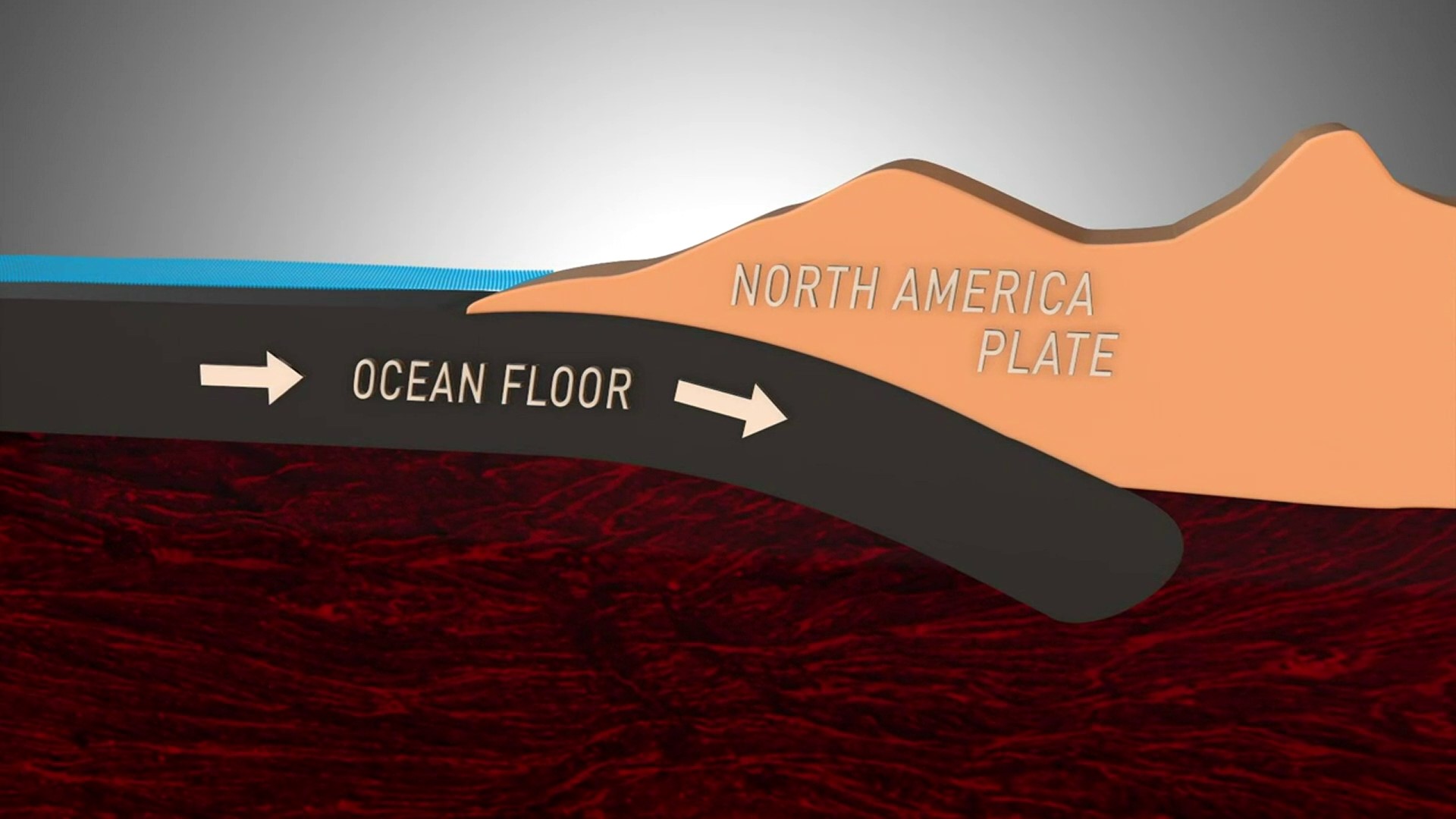A series of earthquakes struck off the northern California coast early Tuesday, ranging from magnitude 2.8 to 5.6. Seismologists say the swarm of quakes—ten in all—can help them understand what future earthquakes in the region will look like.
“Any earthquake that’s above magnitude 4.0 in the Pacific Northwest is exciting because we don’t have that many of them,” said Brendan Crowell, a researcher with the Pacific Northwest Seismic Network (PNSN) at the University of Washington. “It helps us study this area a little more in depth.”
Although the earthquakes were located about 450 miles from Seattle, scientists with PNSN picked up the signals on seismometers at Mount Rainier and Mount St. Helens.
The earthquakes struck roughly 100 miles offshore, near a place called the Mendocino Triple Junction. The junction is a hotbed of tectonic activity where the Atlantic and Pacific plates come together with smaller microplates. The area is what’s known as a spreading zone—a place in the Earth’s crust where tectonic plates are pulling apart from each other.


This spreading is occurring at a rate of almost an inch per year near the Mendocino Triple Junction, slowly creating more oceanic crust. Since the Earth can’t get bigger, this formation must be balanced out by destruction elsewhere. This also happens in the Cascadia Subduction Zone, where the denser plates of the ocean floor dip under the North American plate.
While scientists disagree whether spreading drives subduction or vice-versa, it’s clear that the two processes are tightly connected.
“The earthquakes in the spreading center give us an idea of what that spreading rate is, and that kind of puts some constraints on the subduction rate that can possibly happen,” said Crowell. “These are inextricably linked. Everything's tied together in terms of the overall tectonic story we want to tell.”
Of the ten earthquakes this morning, six of them were a magnitude 4.3 or greater. The largest earthquake registered as a 5.6—the same magnitude as the 1993 Scotts Mills earthquake south of Portland that was felt as far north as Seattle. A similar earthquake on land could cause significant building damage, said PNSN scientists.
Bill Steele, Director of Outreach for PNSN, emphasized the earthquake swarm doesn’t mean “the big one” is imminent. “It’s an ongoing process, all of which will lead to a great earthquake in the Cascadia Subduction Zone eventually, and so understanding how it all works and observing this is very helpful. It’s another set of data points.”
The swarm follows a series of deep tremors over the last few months that moved parts of Washington state and Vancouver Island westward.



